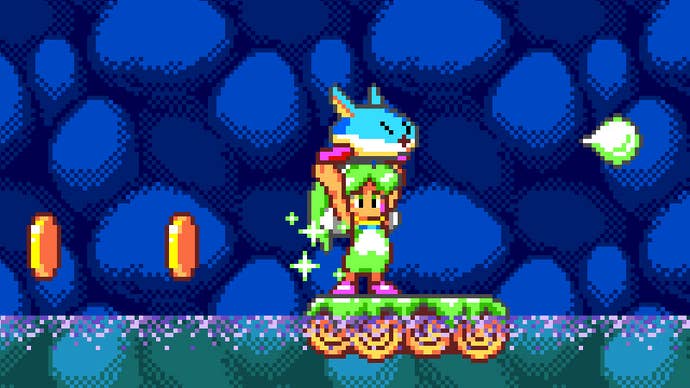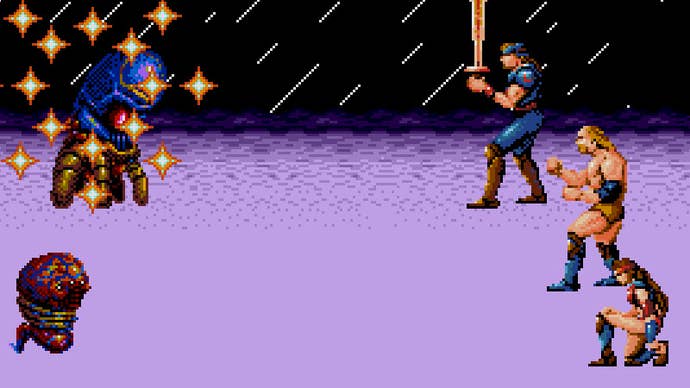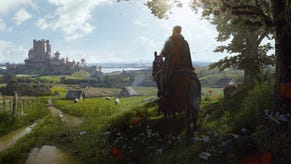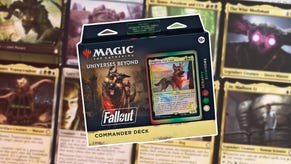The Long Journey West: 8 Japanese Games that Took Their Time Making it to America
Final Fantasy Type-0 isn't the only game to linger for years in a state of uncertainty. Now with video!
This article first appeared on USgamer, a partner publication of VG247. Some content, such as this article, has been migrated to VG247 for posterity after USgamer's closure - but it has not been edited or further vetted by the VG247 team.

Final Fantasy III
[JPN: 1990 USA: 2006] The delay that affected Final Fantasy II's release spoiled things for its sequel, which also debuted on the 8-bit Famicom console. But things took a rockier path for this one. For various reasons, we've never seen a proper recreation of the original 8-bit Final Fantasy III; it was the only pre-FFVII title in the series not to show up on PlayStation, and even a planned top-to-bottom recreation on WonderSwan never panned out (rumor has it the original source code to the 8-bit game has been lost to the ages, throwing a spanner into the works).
Instead of getting a straightforward port of the game alongside the other 32-bit Final Fantasy remakes, Americans didn't get to play the original FFIII until some of its original designers banded together to create a comprehensive reinvention of the game for Nintendo DS.
While closely based on the original FFIII's content and design, the DS game nevertheless took tremendous liberties with the source material; the four blank-slate characters now had names, and one even saw a sex change from male to female. The story was fleshed out. Most of all, the combat and Job systems saw massive rebalancing. The original system, in which swapping Job roles came with a steep cost, was thrown out in favor of something more in line with Final Fantasy V's system. The Onion Knight class was reinvented as a sort of high-end super-job. And the grueling final dungeon, while still unreasonably taxing, was at least theoretically conquerable. Debate rages whether or not this remake was better than the original, but it certainly was more palatable for 2006-era tastes. — Jeremy Parish

Dragon Quest V
[JPN: 1992 USA: 2009] Dragon Quest V had the misfortune of releasing just as Enix's American branch began to distance itself from the series. Instead of bringing out this fifth installment, the publisher gave us other RPGs like Paladin's Quest, The 7th Saga, and Brain Lord, which had their charms, but really couldn't measure up to the magic of Enix's main jam. After Enix of America closed its doors in 1995, Dragon Quest didn't get another shot in America until the 2001 US release of Dragon Warrior VII, which failed to convince RPG fans they missed all that much during the series' American absence. Part V would eventually see a PS2 upgrade, but since Square-Enix didn't get behind Dragon Quest in the USA until 2005's release of DQVIII, we Americans saw another chance to play this classic RPG slip right through our fingers.
Still, this story has a happy ending: Dragon Quest's surprising move to the DS in the late aughts inspired Nintendo to give the series another push in America, and took on publishing duties for Dragon Quest IX, as well as the remake for part VI. And even though the game took a good two decades to reach us, this chapter of Dragon Quest aged like fine wine, netting high scores from critics who'd never encountered it before. Now that Nintendo of America has shifted its focus to other mega-huge Japanese franchises, like Monster Hunter, we can only wonder what other Japan-only Dragon Quest sequels we'll get to play after another 20 years has passed. — Bob Mackey

Monster World IV
[JPN: 1994 USA: 2012] To be fair, Monster World was never all that popular in the US; the NES mutation, Adventure Island, is probably known best. That's a real shame, though, because these Metroidvanias offer plenty of fun and cutesy charm; but by 1994, as the console wars reached a fever pitch, apparently that wasn't enough for Sega of America. Even though Monster World IV stands as an amazing display of classic 2D sprite art, Donkey Kong Country established a new standard, and Sega had no choice but to respond with their own misguided attempts at pre-rendered graphics.
As the years passed and digital distribution services steadily introduced a new generation of fans to the Monster World series, we could only wonder if, somehow, that lost fourth entry would ever reach us. But in mid-2012, the unthinkable happened: A fully translated version of the game appeared on Nintendo's Virtual Console, and not soon after, Monster World IV found itself bundled in a series package on both XBLA and PSN. Now, there's no reason to avoid this great little action/adventure games—unless the prospect of a playing a character in puffy pants strikes you as offensive. — Bob Mackey

Star Odyssey
[JPN: 1991 USA: 2013] This has got to be some kind of world record. While Star Odyssey strains the rules somewhat, having launched more than a decade after Sega stopped officially licensing Genesis games, it nevertheless received a legitimate cartridge release in America with the blessing of the original creators. So we're counting it.
Super Fighter Team made its mark in the retrogame collector world with the U.S. localization of an obscure Taiwanese RPG for Genesis called Beggar Prince geared toward modern collectors, and Star Odyssey went a step beyond that. It took Blue Almanac, a game developed by Hot•B in the early '90s, and gave it a low-run physical release complete with English localization in the U.S. more than a decade later. While not a particularly great or desirable RPG, it nevertheless deserves credit for taking so much of its sweet time coming overseas. — Jeremy Parish







